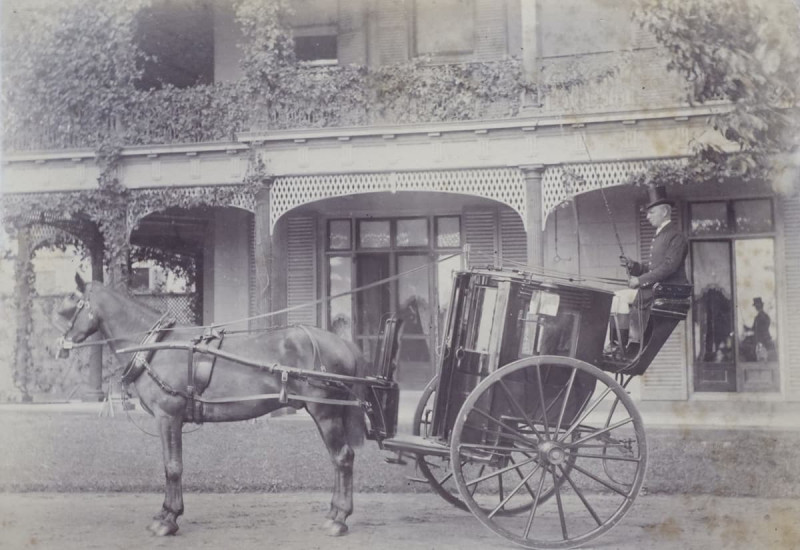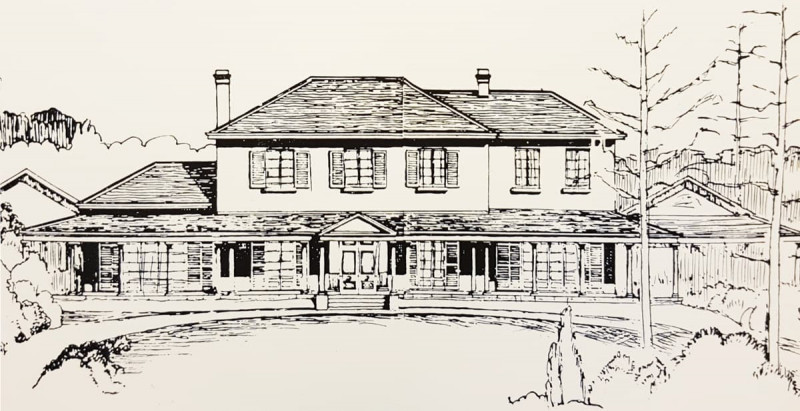In 1828 George Allen, the first solicitor trained in the colony, bought 95 acres and commissioned John Verge to build “an elegant country house” for his growing family.
The Regency design consisted of a two-storey rectangular block with single-storey wings and a stone-flagged verandah on two sides, supported by cast-iron Doric columns. Shuttered French windows afforded views of flower gardens and cultivated shrubberies planted with oaks, firs and Norfolk pines. At the rear a kitchen and quarters for 11 assigned convicts faced onto a flagged courtyard.
Within the grounds were three fresh water wells, an orchard, a Wesleyan chapel, and a cricket pitch and pavilion. A stone house (Toxteth Cottage later renamed Tranby) and ten wooden shingle-roofed cottages accommodated family members and gardeners and other workers.
Toxteth Park was known for its hospitality, although on one occasion, during Allen’s 1844-5 period as Sydney Mayor, about 30 of the 80 invited were left standing when there were insufficient chairs. As Allen was President of the Total Abstinence Society, some visitors smuggled in their own champagne.
After Allen’s death in 1877 his eldest son George Wigram Allen commissioned his brother-in-law George Mansfield to add a third storey and a tower. The additions plus the then fashionable Italianate embellishments detracted from the original classical design.
In 1881, after Wigram Allen had moved to Toxteth Park from Strathmore on the other side of Glebe Point Road, he entertained Prince Albert and the future king, George V. The grounds were lit with Chinese lanterns and the princes planted a Port Jackson fig in the front garden as a memento of their visit.
Following Wigram Allen’s death in 1885 the huge estate was progressively subdivided. When his widow vacated the mansion it functioned briefly as a boarding house. In 1901 it was bought by the Sisters of the Good Samaritan after their Pitt Street convent and school were demolished to make way for Central Railway Station. The school’s re-erected stone pillars frame the entrance to today’s St Scholastica’s College, and Toxteth Park’s gatekeeper’s lodge remains beside the old driveway at the curving intersection of Toxteth and Avenue Roads.




